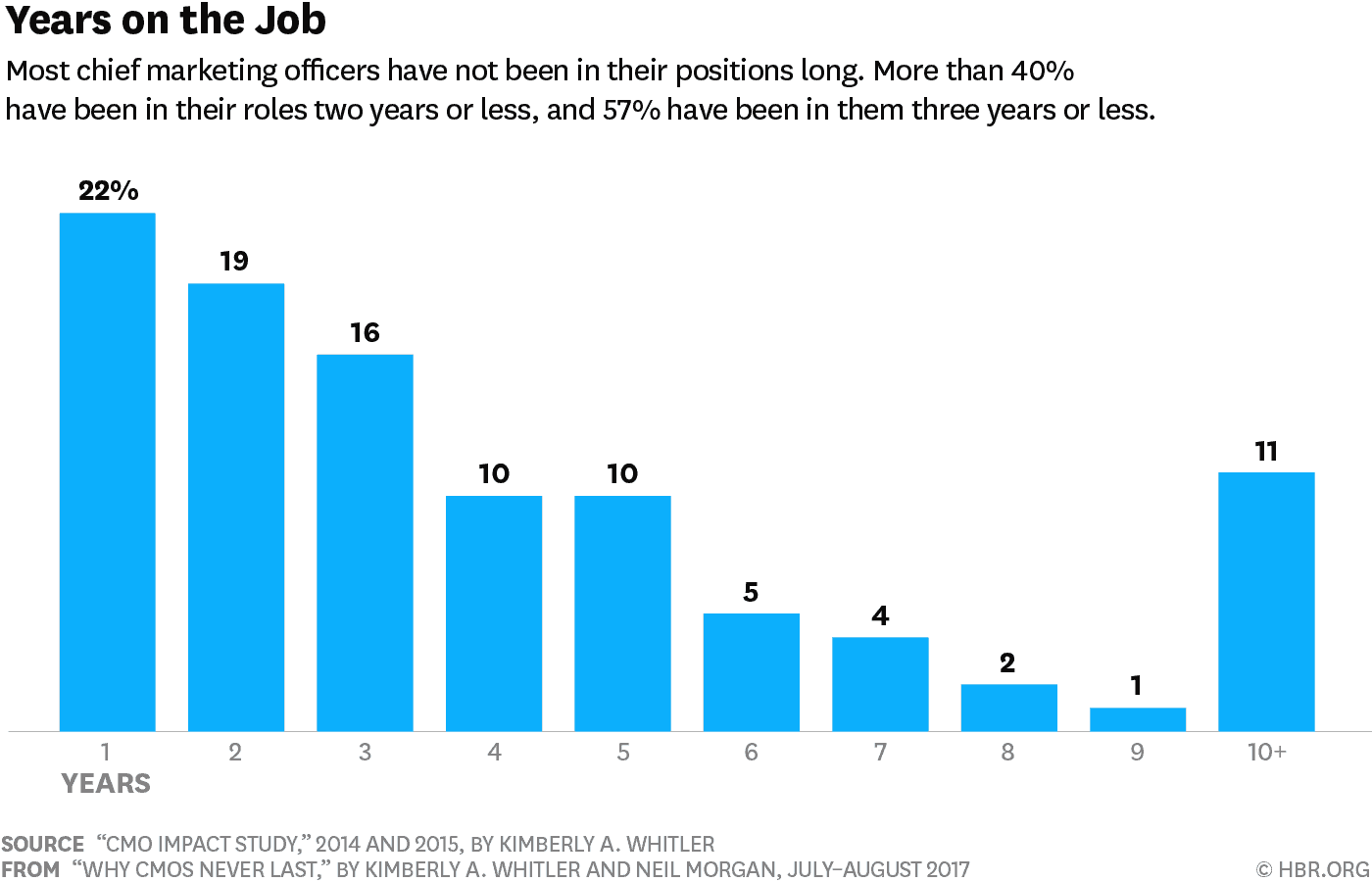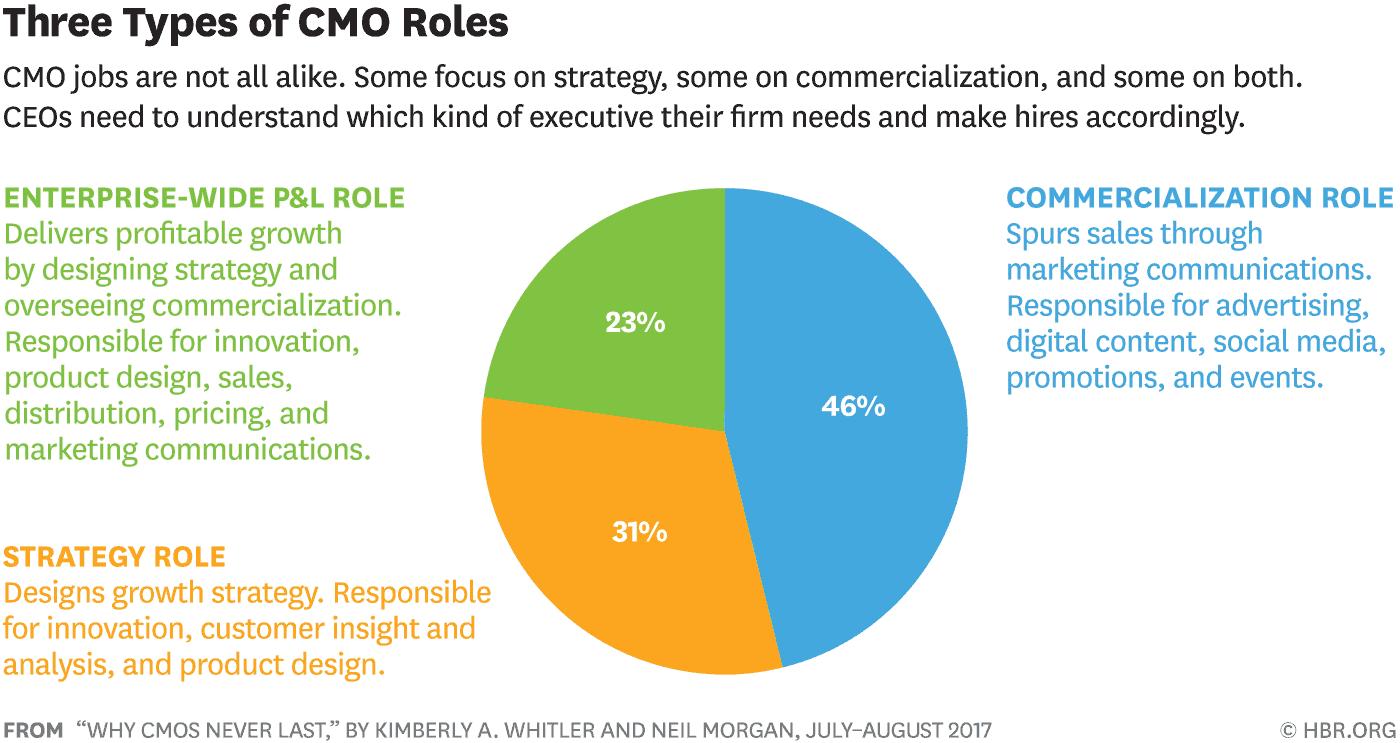There are essentially four tech marketing roles in any given tech company beneath the CMO (Chief Marketing Officer):
- Communications
- Demand and Operations
- Product Marketing
- Creative/Brand
Each of these tech marketing roles performs a specific function in the overarching marketing strategy that a tech company operates.
However, not all organizations recognize the crucial differences between the various tech and digital marketing roles, and subsequently struggle allocating the right people with the right skills to the right roles within the company.
Indeed, even the CMO’s role is often confused at a lot of organisations – and this causes tension within the executive suite, particularly in relationships between Chief Executive Officers (CEOs) and CMOs.
Check out the following articles to learn more about tech marketing startups:- Campaigns for Tech B2B Marketing: A 2023 Improved Guide
- 5 Steps to Achieve Marketing Success for Your Tech Startup
- How a Tech Marketing Agency Can Boost Your Performance
A few years ago, a global survey by the Fournaise Marketing Group revealed that a staggering 80% of CEOs “didn’t trust” or were “unimpressed” with their CMOs in relation to sales and marketing activities. By comparison, just 10% felt the same about their Chief Financial Officers (CFOs) and Chief Information Officers (CIOs).
And CMOs, too, also sense a problem. A more recent survey from Harvard Business Review reveals that 74% of CMOs believe that their jobs don’t allow them to maximise their impact on the business.
It’s no wonder, then, that CMOs have the highest turnover in the tech industry C-suite. Analysis conducted last year by Korn Ferry shows that CMOs stay in office just 4.1 years on average, compared to CEOs who average 8.0 years and CFOs who average 5.1 years. And research from Harvard Business Review shows that churn rates may in fact be even higher – 57% of the CMOs surveyed had been in their position for three years or less.

(Image source: hbr.org)
Are You a CMO? If So, What Type?
Embodying the top role in marketing, the CMO’s role should be clear.
However, though the majority of CMOs share core responsibilities, such as overseeing marketing strategy and implementation (with 90% taking charge) and controlling brand strategy and customer metrics (a responsibility for over 80%), disparities surface in their technical knowledge, channel marketing experience, and proficiency in executing consumer marketing events. Notably, individual CMOs exhibit distinctions in their interactions with both direct and indirect support and sales departments, further contributing to the varied landscape of their roles.
And this stands to reason. No two companies are the same, and so the CMO’s role needs to reflect the differing needs and operations within each particular organisation.
In fact, Harvard Business Review identifies three distinct types of CMO:
- Strategy Role – The CMO is responsible for leading decisions on the organisation’s positioning, and translating those decisions into the design of new products, services, and customer experiences.
- Commercialisation Role – This type of CMO works primarily on using marketing communications to sell the products, services and experiences that others
- Enterprise-wide P&L Role – The third type of CMO combines the responsibilities of the first two – overseeing both strategy and commercialisation – as well as profit and loss (P&L) responsibilities, and is involved, too, with sales, distribution, and pricing.

(Image source: hbr.org)
So – if you’re a CMO, which type are you?
A perhaps more important question is this – if you’re the CEO of an organisation looking to make a hire, what type of CMO would be best suited to your company’s needs?
The Four Marketing Roles in Tech
Beneath the CMO, tech marketing roles essentially break down into four categories – communications, demand and operations, product marketing, and creative/brand, each with their own channel marketing teams.
Why four categories? Because, when combined, they cover the core operations of marketing concepts that tech companies need to successfully market their products and/or services.
So, let's now consider each of the four tech marketing roles one at a time.
Communications Role
The communications role is one of the most recognised tech marketing roles in the modern tech company. The main function of this role, as its name suggests, is to deal with communications, communications material, and relationships.
The communications department will largely be in charge of public relations (PR) and social media communities. In terms of social, the role differs from that of a social media marketer (which is covered by the product marketing role) in the sense that it focuses on developing, maintaining and nurturing great customer relationships on social, as opposed to increasing sales and awareness.
In addition, the communications role also covers internal employee communications – including those with the executive suite. It also focusses on building influencer relations as part of the community-building drive.
Demand and Operations Role
The demand and operations role is increasingly becoming one of the most important tech marketing roles.
Marketing professionals embodying this role are responsible for demand generation, and take advantage of technology solutions to continuously adapt marketing messages and engage buyers with personalised experiences.
Indeed, the demand and operations tech marketing role is all about data and marketing technology (MarTech). With a sharp eye for analytics and A/B testing, this department is heavily involved with experimentation, and, in B2B terms, will be the team behind account-based marketing efforts as well.
Product Marketing
Product marketing is your traditional tech marketing role.
Product marketers are experts in the tech products and services that the company is selling. The role encompasses creating targeted content marketing materials designed to engage and educate a segmented audience along the path to purchase.
Product marketers are also responsible for brand positioning, which is again achieved via the creation of content marketing efforts that focus on the product and/or service being sold. Product marketers enable the sales team to drive sales performance.
Creative/Brand
The creative/brand role focuses on creating campaigns at brand level.
This is where creatives and designers work to create and develop the “personality” of the brand. The role focusses on creating marketing campaigns that operate at an emotional level with the target audience – i.e. campaigns that aim to increase brand affinity.
Advertising campaigns, name-changes, taglines, and some user-generated content campaigns – these are all functions covered by the creative/brand role, and will often be right under the watchful eye of the CMO.
So – What Type Are You?
No two organisations are identical, and as a result, CMOs naturally structure various tech marketing roles in distinct ways across different companies. In shaping your tech marketing role, you may discover that it incorporates two or more of the functions mentioned earlier. This variability in organisational arrangements becomes particularly evident when considering the distinctive roles and responsibilities of tech sector and market development strategists. These strategists play a crucial role in navigating the dynamic landscape of the tech sector and shaping market development strategies to ensure sustained growth and competitiveness.
But the tech marketing roles identified in this article will almost certainly cover everything that falls under the whole marketing department’s remit at any given tech company.
The question is – do you have all bases covered?
If you need help filling any or all of the tech marketing roles highlighted in this article or personalised job recommendations, get in touch with growth experts here at Incisive Edge today.








